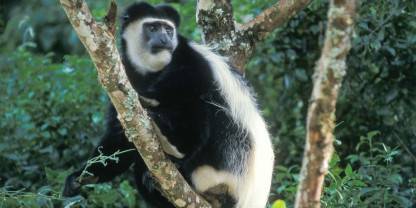Wildlife viewing in Marsabit National Park is restricted by the dense vegetation and limited road network. often walk around the crater lakes in the afternoon. Other animals that might be spotted coming to drink are and . Large troops of are quite common in the forest, but is now very scarce. Marsabit is renowned as the habitat of the , one of the most regal of antelopes.
Wildlife Highlights
Mt Marsabit supports around 200 , including some impressive tuskers. Many of these are related to Ahmed, a legendary bull whose ground-scraping 300kg/660lb tusks earned him presidential protection prior to his death in 1974. You’re unlikely to see any plains wildlife on the mountain’s forested upper slopes. By contrast, the more remote and arid south is home to, or occasionally passed through by, , , , , , and a varied cast of carnivores.
Best Time for Wildlife Viewing
Marsabit can be visited throughout the year, but the best wildlife viewing is in the Dry season, from June to September. At this time, the vegetation is less thick and animals are more likely to visit the crater lakes. The dry spell from January to February, between the short and long rains, is also a great time for spotting animals. April is the wettest month and wildlife watching can be difficult at this time.














